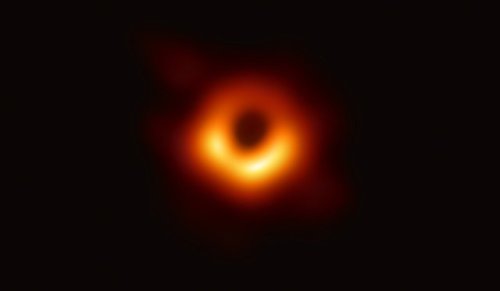107 More Days And Counting...
107 more days and counting...

Star Wars: The Last Jedi
More Posts from Delightfulskywalker and Others







50th Anniversary of the Lunar Landing - July 20th, 1969
Apollo 11 was launched on a Saturn V rocket from the Kennedy Space Center on July 16th, 1969 carrying Commander Neil Armstrong, lunar module pilot Buzz Aldrin, and command module pilot Michael Collins. Armstrong and Aldrin became the first humans to land on the surface of the moon when the Apollo Lunar Module Eagle landed in the Sea of Tranquility on July 20, 1969, at 20:17 UTC. Nearly a day later the men rejoined Collins in the command module Columbia, held in lunar orbit, and set a trajectory back to Earth. After over eight days in space Apollo 11 splashed down in the Pacific Ocean on July 24th.
The black and white images of the first lunar landing were received and broadcast live to at least 600 million people on Earth, around a fifth of the total population, a viewership record at the time. Within the USA, 94% of American televisions tuned in to the broadcast.
Had to post this somewhere.
I’ve been thinking about Elon Musk’s Tesla.
The guy shot a car into space. A freaking car. With a fake astronaut in the seat and the words “Don’t Panic.”
And people are seeing this as this bizarre conspicuous consumption or a weird Tesla publicity stunt. As a one percenter…
…but the more I think about it, the more I realize something quite simple.
This guy had to launch a test load. He had to put something on that rocket. Given the power of the rocket, whatever they launched as a test load had to be heavy enough to properly test the biggest rocket we’ve launched since the Apollo program.
It had to be well built and solid enough to survive the launch. Now, because of the size of the load, it had to be put into a stable orbit not, as happens with smaller test loads, set to burn up in the Earth’s atmosphere.
So, assuming everything went well, whatever they put on that rocket? It’s going to be in space for a long time. Assuming it’s not hit by a bit of debris, or an asteroid, or whatever, it could be up there for millions of years. It’s in space, so it’s not going to rust or corrode. It will eventually develop pitting from micro meteor strikes, it’s not going to last forever.
So, what does the guy send up.
A freaking car with an astronaut in the seat and the words “Don’t Panic” printed on it.
It’s corny. It’s tacky. But what else is it?
It’s art.
It’s something that’s going to still be recognizable as art in a few thousand years. After we’re all dead. Heck, it may still be recognizable as art after our species is dead - extinct or evolved into something else.
Given the fact that he had to put some kind of object into a stable orbit in the solar system, Musk picked not just art, but ridiculous art. The kind of thing that hangs from diner ceilings, the kind of thing a kid would put together.
He put something out there that screams to the void “This is us. This is humanity. This is how utterly silly we are, how completely frivolous.”
And you know what, if the first..or the only…thing an alien civilization sees of us is Elon Musk’s stupid car, I’m quite happy with that.
They might not be able to decipher the message, but they’ll know somebody was here who, given the power to fly into space used it to play.
I’m quite happy with that.

Han Solo

Astronomers Capture First Image of a Black Hole
The Event Horizon Telescope (EHT) — a planet-scale array of eight ground-based radio telescopes forged through international collaboration — was designed to capture images of a black hole. Today, in coordinated press conferences across the globe, EHT researchers revealed that they have succeeded, unveiling the first direct visual evidence of a supermassive black hole and its shadow. The image reveals the black hole at the centre of Messier 87, a massive galaxy in the nearby Virgo galaxy cluster. This black hole resides 55 million light-years from Earth and has a mass 6.5 billion times that of the Sun. Supermassive black holes are relatively tiny astronomical objects — which has made them impossible to directly observe until now. As the size of a black hole’s event horizon is proportional to its mass, the more massive a black hole, the larger the shadow. Thanks to its enormous mass and relative proximity, M87’s black hole was predicted to be one of the largest viewable from Earth — making it a perfect target for the EHT. The shadow of a black hole is the closest we can come to an image of the black hole itself, a completely dark object from which light cannot escape. The black hole’s boundary — the event horizon from which the EHT takes its name — is around 2.5 times smaller than the shadow it casts and measures just under 40 billion km across.
Credit: ESO
I made a Star Wars vine compilation because what the heck
-
 mary-mature181347-blog liked this · 3 years ago
mary-mature181347-blog liked this · 3 years ago -
 dindjarinsh0e liked this · 3 years ago
dindjarinsh0e liked this · 3 years ago -
 rackets-and-fuel-main liked this · 4 years ago
rackets-and-fuel-main liked this · 4 years ago -
 nereadelgado liked this · 4 years ago
nereadelgado liked this · 4 years ago -
 ultramadeofstardust liked this · 4 years ago
ultramadeofstardust liked this · 4 years ago -
 rxseclrdgrl liked this · 4 years ago
rxseclrdgrl liked this · 4 years ago -
 tsukiflies liked this · 4 years ago
tsukiflies liked this · 4 years ago -
 no-face-no-shame liked this · 5 years ago
no-face-no-shame liked this · 5 years ago -
 freshwoner liked this · 5 years ago
freshwoner liked this · 5 years ago -
 tashastrange89 liked this · 5 years ago
tashastrange89 liked this · 5 years ago -
 lokihutchersonmellark reblogged this · 5 years ago
lokihutchersonmellark reblogged this · 5 years ago -
 clydeluckylogan reblogged this · 5 years ago
clydeluckylogan reblogged this · 5 years ago -
 moontiger61 liked this · 5 years ago
moontiger61 liked this · 5 years ago -
 fandomobsessediguess liked this · 5 years ago
fandomobsessediguess liked this · 5 years ago -
 that-lazy-snail reblogged this · 5 years ago
that-lazy-snail reblogged this · 5 years ago -
 bloomingblackrosez liked this · 5 years ago
bloomingblackrosez liked this · 5 years ago -
 godamongmanlymen666 liked this · 5 years ago
godamongmanlymen666 liked this · 5 years ago -
 wildefire liked this · 5 years ago
wildefire liked this · 5 years ago -
 fjearn liked this · 5 years ago
fjearn liked this · 5 years ago -
 phantomess liked this · 5 years ago
phantomess liked this · 5 years ago -
 loupaulinamaria liked this · 5 years ago
loupaulinamaria liked this · 5 years ago -
 a-red-sun-rises liked this · 5 years ago
a-red-sun-rises liked this · 5 years ago -
 leilalovesshrek liked this · 5 years ago
leilalovesshrek liked this · 5 years ago -
 drunkbabyxx liked this · 5 years ago
drunkbabyxx liked this · 5 years ago -
 thatguythatcoulddraw liked this · 5 years ago
thatguythatcoulddraw liked this · 5 years ago -
 gruts-world liked this · 5 years ago
gruts-world liked this · 5 years ago -
 yuukanna liked this · 5 years ago
yuukanna liked this · 5 years ago -
 buttercup-ky liked this · 5 years ago
buttercup-ky liked this · 5 years ago -
 merrul liked this · 5 years ago
merrul liked this · 5 years ago -
 annjones656 liked this · 5 years ago
annjones656 liked this · 5 years ago -
 jedianileia reblogged this · 5 years ago
jedianileia reblogged this · 5 years ago -
 oscarisaacss-wp liked this · 5 years ago
oscarisaacss-wp liked this · 5 years ago -
 weird-antisocial-emo liked this · 5 years ago
weird-antisocial-emo liked this · 5 years ago -
 thestarangel liked this · 5 years ago
thestarangel liked this · 5 years ago -
 forksoffortune liked this · 5 years ago
forksoffortune liked this · 5 years ago
"Hope is like the sun. If you only believe it when you see it, you'll never make it through the night." -Princess Leia
286 posts






















